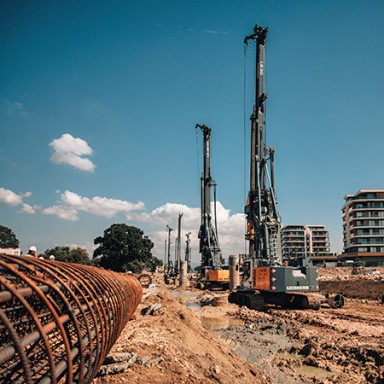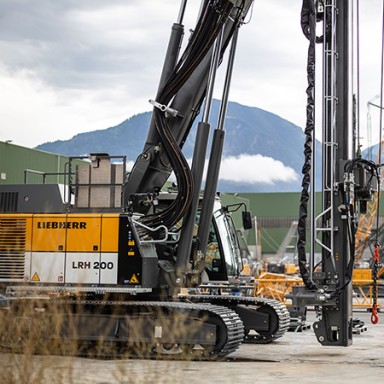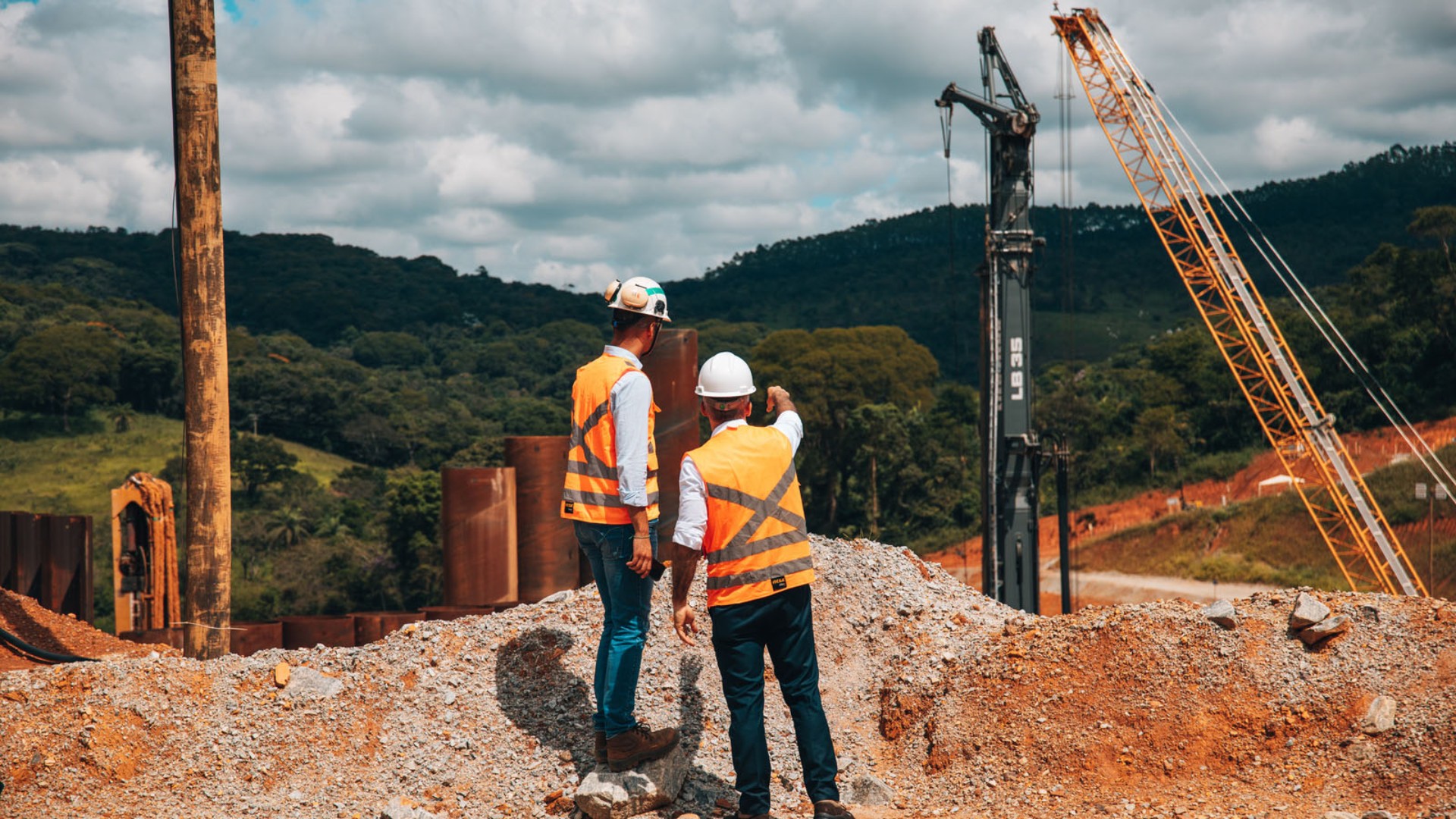
Guardianship for humankind and nature
Every year after weeks of heavy rains, hundreds of thousands of Brazilians are threatened by floods – especially in Minas Gerais, where many families preventively have to leave their homes. Next to the immediate danger of water masses, there is also high risk of contamination of the valleys due to heavy-metal-containing sludge. Right there, in Brazil’s mining hub, Piacentini do Brasil works to secure a tailings dam. Newest Liebherr machinery ensures timely completion in a highly volatile working environment.
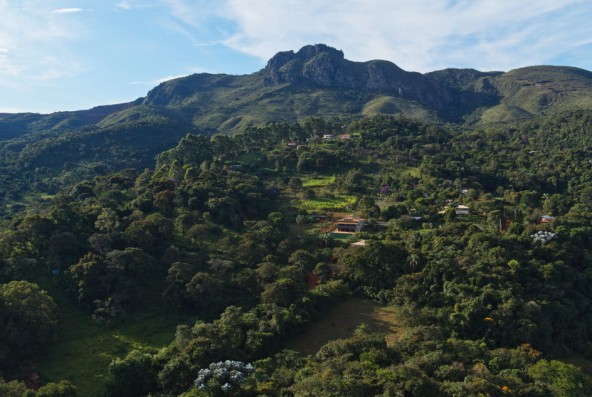
Safeguarding human life, protecting the environment
By the end of 2022, close to 24.000 dams were registered in Brazil. They are utilized for various purposes such as irrigation, regulation of water flows, storing water supply for human consumption and electricity production as well as various industrial uses. One such industrial use is for mining tailings, the by-products of mining operations that have no economic value.
Brazil is also a country where mining has been an important economic factor ever since colonial times, when Portuguese settlers first discovered reserves of gold in the state of Minas Gerais in the 1693 . Consequently, it is no surprise that around 900 tailings dams are in use today. Companies operating here no longer only look for gold, however. Currently, Brazilian mining activities are centred on iron ore extraction and copper, gold, aluminium, manganese, tin, niobium, and nickel are lesser but still prominent metals produced.
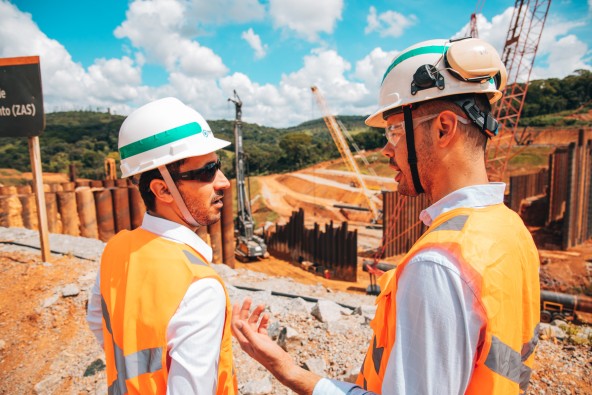
Containing the risk
The Serra Azul mine located in Itatiaiuçu, also in the state of Minas Gerais, is operated by Brazil’s largest steel producer ArcelorMittal and still produces over a million tonnes of concentrate and lump ore every year. The Serra Azul dam, which stores mining refuse, however, has been retired since 2012. After disaster struck in 2015 with the Mariana tailings dam collapse and in 2019 when another tailings dam in Brumadinho suffered catastrophic failure, officials as well as mining companies were on high alert. Shortly after, ArcelorMittal approached Piacentini do Brasil to discuss solutions on how to further secure the dam during its decommissioning. “We began surveying for the construction of a containment structure downstream of the Serra Azul dam together with ArcelorMittal’s engineering team in 2020”, recounts Danilo Pugliesi, contract manager at Piacentini do Brasil. At first the two companies explored the approach of earth and rockfill reinforcements, which is more typical to Brazil. However, Piacentini do Brasil’s wide expertise in special foundations and technologies offered another solution.
By clicking on “ACCEPT”, you consent to the data transmission to Google for this video pursuant to Art. 6 para. 1 point a GDPR. If you do not want to consent to each YouTube video individually in the future and want to be able to load them without this blocker, you can also select “Always accept YouTube videos” and thus also consent to the respectively associated data transmissions to Google for all other YouTube videos that you will access on our website in the future.
You can withdraw given consents at any time with effect for the future and thus prevent the further transmission of your data by deselecting the respective service under “Miscellaneous services (optional)” in the settings (later also accessible via the “Privacy Settings” in the footer of our website).
For further information, please refer to our Data Protection Declaration and the Google Privacy Policy.*Google Ireland Limited, Gordon House, Barrow Street, Dublin 4, Ireland; parent company: Google LLC, 1600 Amphitheatre Parkway, Mountain View, CA 94043, USA** Note: The data transfer to the USA associated with the data transmission to Google takes place on the basis of the European Commission’s adequacy decision of 10 July 2023 (EU-U.S. Data Privacy Framework).European methodology brought to Brazil
“We needed to achieve a shorter execution time”, says Eduardo Araújo, construction manager at Piacentini do Brasil. They had successfully used metal sheet piles for the containment of loose materials such as mining tailings in emergency works after the collapse of the Mariana and Brumadinho dams. Sheet piles, widely used in European countries in geotechnical containment, have the advantage of speed of execution, ease of installation and low environmental impact. For the Serra Azul dam containment structure, Piacentini do Brasil came up with a unique design. “On completion, the structure will consist of 1,036 steel pipes organized in three parallel lines with the centre line consisting of two rows of pipes”, explains Ana Carolina Torres, project engineer at Piacentini do Brasil. The steel pipes utilized have a diameter of 1.5 metres and a wall thickness of either 19 or 25 millimetres. “So, the pipes have an individual weight of 42 tonnes and 52 tonnes”, she states. It quickly became clear that specialised equipment would be needed to drive in these huge and hefty pipes.
_w592.jpg)
The right equipment for a colossal job
“Over the past years we have developed a great relationship with Liebherr and whenever we need some innovative equipment for a specific project, we seek the expertise of Liebherr to develop a solution together”, says Pugliesi. And that is exactly what they did. “When our testing phase concluded in 2021, we contacted Liebherr and received a great deal of engineering support from their team responsible for drilling machines. These machines were a major bottleneck in the execution of the project during the testing phase”, Araújo says. Two LB 35 drilling rigs were ordered and delivered from the Liebherr factory in Austria in 2022 just in time for the start of the drilling phase. “Our method is to pre-drill with the LB 35 and then use an LR 1300 crawler crane for the hoisting, verticalization and crimping of the pipes”, Torres explains. The operation is accompanied by an HS 8200 which Piacentini do Brasil already acquired earlier on for another unique project.
By clicking on “ACCEPT”, you consent to the data transmission to Google for this video pursuant to Art. 6 para. 1 point a GDPR. If you do not want to consent to each YouTube video individually in the future and want to be able to load them without this blocker, you can also select “Always accept YouTube videos” and thus also consent to the respectively associated data transmissions to Google for all other YouTube videos that you will access on our website in the future.
You can withdraw given consents at any time with effect for the future and thus prevent the further transmission of your data by deselecting the respective service under “Miscellaneous services (optional)” in the settings (later also accessible via the “Privacy Settings” in the footer of our website).
For further information, please refer to our Data Protection Declaration and the Google Privacy Policy.*Google Ireland Limited, Gordon House, Barrow Street, Dublin 4, Ireland; parent company: Google LLC, 1600 Amphitheatre Parkway, Mountain View, CA 94043, USA** Note: The data transfer to the USA associated with the data transmission to Google takes place on the basis of the European Commission’s adequacy decision of 10 July 2023 (EU-U.S. Data Privacy Framework).Safety first in a dangerous environment
And as if specialized materials and specialised machinery weren’t exiting enough, the construction site is located within the dam’s self-rescue zone, an area in which authorities are not able to provide immediate support in case of dam break. “To ensure the safety of our employees, all who access this zone need to carry an identification tag and GPS so that we can track them individually by evacuation time, within that area”, says Araújo. Well-considered precaution as the Serra Azul dam is currently on the highest level of alert – level 3. Rupture could potentially have a huge impact on the community around the dam putting the lives of residents as well as all employees working in the mine at risk. As tailing dams don't simply hold water but contain elements such as sand, clay, starch, iron and toxins, the impact of failure on the environment could be disastrous as well.
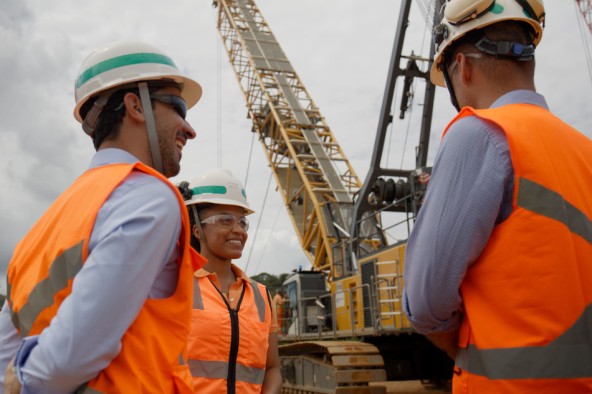
Rewarding work
The risks accompanying their work don’t seem to faze Piacentini do Brasil’s employees, however. “To me it’s a privilege to be on a construction site of this magnitude and at to have this much responsibility at such a young age”, says Torres, “but what I find most rewarding is that our work has such a huge environmental and social impact”. A sentiment echoed by her colleagues: “It is the most challenging project, I have worked on so far”, Araújo states. “I had the pleasure of participating in the conception of the project. I find it very gratifying to see how the project is developing and to know that it is being done with quality and with safety”, Pugliesi adds.
A commitment to customers and employees
In all their work, Piacentini do Brasil showcases their philosophy of fostering strong relationships. Customer relations are built on a foundation of trust, with Piacentini seeking to deliver innovative and unique solutions tailored to the needs of their customers. A vital pillar for Piacentini’s projects is the relationship with Liebherr as its supplier and the company’s extensive expertise. This longstanding collaboration and partnership demonstrates that good relations are the base of seamless operations and successful projects. In the heart of the company, however, lies a special commitment to its employees, giving them the opportunity to graduate and grow by creating a workplace where every individual can thrive. They all share a common goal in their work: the growth and sustainable development of an even better and safer Brazil.
About Piacentini
Piacentini is a globally operating family business founded in 1949 by Stefano Piacentini. From the outset, the company focussed on construction and civil engineering works in the public and industrial sectors and quickly established renown based on the work on innumerable infrastructure projects. Piacentini specialises in unusual and unique projects, continuously working to develop customised solutions that meet the client's requirements while balancing costs, equipment, and solutions. Piacentini do Brasil began operations in 2012 tailoring its Western expertise to the Brazilian market. The knowledge and experience acquired abroad have consolidated its image in the Brazilian market, especially when it comes to special foundations.
The company is renowned for its large fleet of cutting-edge equipment, which enables rapid execution while producing little noise and pollution.


